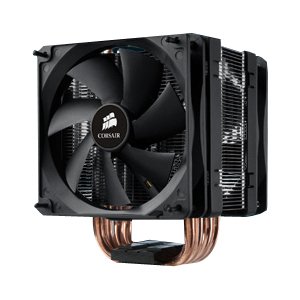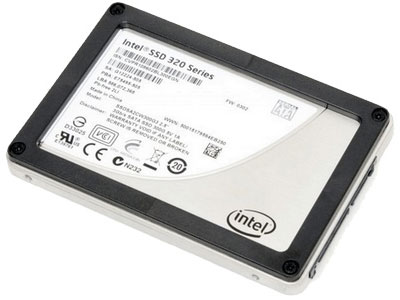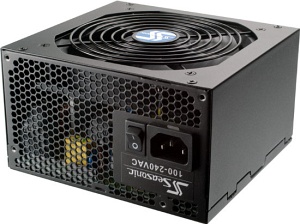Holiday 2011 Midrange System Buyer's Guide
by Zach Throckmorton on December 6, 2011 12:00 AM EST- Posted in
- Guides
- AMD
- Intel
- Sandy Bridge
- Llano
- Holiday 2011
- midrange
- NVIDIA
The King of Mainstream Processors
Intel's Core i7-2600K is actually not the king of mainstream processors—that honor is reserved for the more recently released Core i7-2700K. The only differences between the two chips are a 100MHz clockspeed advantage for the 2700K that carries a roughly $50 premium. That is, compared to the 2600K, the 2700K offers around 3% more performance at a cost increase of about 15%. Further, the 2700K does not reliably overclock substantially better than the 2600K. Thus, I consider spending the extra money on a 2700K unwise.
The Core i7-2600K's primary competitor is the Core i5-2500K. Compared the 2500K, the 2600K offers a slight clockspeed increase, and more importantly, Hyper-Threading. The 2600K is about $100 more expensive, so it's important to understand what applications and usage scenarios actually benefit from Hyper-Threading. You can see from Bench how the two CPUs compare. The short story is that if you use a lot of multi-threaded applications (like many photo and video editing titles), do a lot of file compression and decompression, or use specialized professional applications (3D Studio Max or CAD/CAM programs), then the 2600K is a wise investment. The average computer user, most gamers included, are really better off with the 2500K.
Rounding out the build

While the Core i7-2600K's stock cooler is sufficient for achieving respectable overclocks, for this build we're pairing the CPU with Corsair's A70. The A70 is a dual-fan heatpipe design that performs very well at an attractive after rebate price (and I've never had any issues with Corsair rebates). That said, there are many other similar CPU coolers that cost about $30, such as Cooler Master's popular Hyper 212 Plus that I've recommended previously.
Like the Biostar Z68 board this guide pairs with the Core i5-2500K, the ASUS P8Z68-V LE is also one of my go-to motherboards, for folks who want a few more bells and whistles than what the Biostar board offers. I've had good to great experiences with this board, especially in terms of its overclocking ability. Thus far these boards have been rock solid stable in the builds I've deployed with them. For a daily workhorse PC, reliability should be a primary consideration in choosing components.

Reliability is why we're going with an Intel 320 Series 120GB SSD for this PC. This SSD is neither particularly inexpensive nor particularly fast (though it will still put any HDD to shame). Instead, Intel's 5 year SSD warranty is the best in the market, and in my experience, Intel's SSDs are very reliable. (Yes, we know the 320 Series had some teething problems, but those appear corrected with the latest firmware.) We've bumped the capacity of the SSD up compared to the previous two builds so that more work-related applications can be installed on it, including disk space hogs like Adobe's CS5.5. While this build also includes the Samsung F3 1TB, it is important to consider whether you need a 7200RPM mainstream HDD or if instead you might be able to use a slower, less expensive "green" drive like Western Digital's WD10EARS.
Because some applications devour RAM, and because RAM is extremely inexpensive right now, we've bumped the DDR3 count from 8GB to 16GB—at the low cost of $60 total. While we're specifically recommending two kits of 8GB (2 x 4GB) G.SKILL Ripjaws X DDR3-1600 because of their current low price, RAM prices fluctuate frequently and wildly, so it's a good idea to comparison shop between different brands for the most attractive combination of price and speed.

SeaSonic is another component company with a well-deserved reputation for reliability. The S12II 430B is not cheap for a 430W PSU; however, it is very high quality, comes with a 5-year warranty, and is more than enough power for this system. It's also capable of supporting many upgrades, including a powerful discrete GPU if you become interested in GPU-accelerated computing (or gaming) down the road.
Finally, Fractal Design's Define R3 has the honor of housing all of these capable components. The Define R3 was recently reviewed by Dustin, and again I concur with his conclusions. I think this case is as good as it gets at the $100 price point, though there are other cases that perform similarly in terms of objective measures like temperature and noise. I simply find working with Fractal Design's cases in general to be a pleasure and really like their aesthetics.
| Component | Product | Price | Rebate |
| CPU | Intel Core i7-2600K | $320 | |
| CPU cooler | Corsair A70 | $45 | -$15 |
| Motherboard | ASUS P8Z68-V LE | $133 | |
| RAM | 16GB G.SKILL Ripjaws X DDR3 1600 (4 x 4GB, 2 kits) | $60 | |
| SSD | Intel 320 Series 120GB | $200 | |
| HDD | Samsung F3 1TB | $150 | |
| Power supply | SeaSonic S12II 430B | $75 | |
| Case | Fractal Design Define R3 | $100 | |
| Optical drive | LITE-ON iHAS-324-98B | $20 | |
| Operating system | Microsoft Windows 7 Home Premium 64-bit (OEM) | $100 | |
| Total: | $1203 | $1188 |
Summary
This Intel Core i7-2600K system rings up about 20% more expensive than the Core i5-2500K rig on the previous page. You lose the ability to game as this PC has no discrete video card (and the integrated Intel graphics are not gaming-level). Instead, you gain a larger SSD, increased overclocking capability, twice the RAM, and an extra four threads courtesy of Hyper-Threading. To be clear, the i5-2500K is likely a better fit for most computer users than this i7-2600K rig. However, this system can easily be turned into a gaming rig in the future, mitigating one of its drawbacks. And most importantly, certain more intensive applications like many video encoding titles will see more than a 20% improvement in performance for a 20% cost increase. If you can hang off buying a GPU for the time being, as we noted earlier the next generation AMD parts are due "real soon now" so you can grab one of those after the holidays.
We have a few more words of advice and general conclusions on the next page.










57 Comments
View All Comments
shivoa - Tuesday, December 6, 2011 - link
My Lian Li PC-60 is a great ATX case from 11 and a half years ago. Thank God we never migrated to BTX or I might have had to worry about buying a new box to put my PC in.It has no concerns with the current length of PCI-E cards, has a fully removable back and motherboard tray design that makes working with it a pleasure, and the dual 80mm front, single read + PSU exhaust isn't the most cutting edge design but it can still do the job (and over the years I've done some refinement of the air flows to help the case keep cool and quiet). Yes, the PSU it top mounted so the design is a bit more top heavy but the general design is just fine and shows what a long term purchase a good case can me.
Will we still be using ATX in 11-12 more years? I doubt it, but you can't look at the past and say it invalidates purchasing a case with a long term view.
Ananke - Wednesday, December 7, 2011 - link
Get a Lian Li. Very few, if any, can compare.For a workstation, I would recommend PC-90. For a budget choice PC-9F or K9.
intel 2500k is good for Adobe and video processing, if you have the money get the 2600k and Z68 Asus board. Get 16GB RAM, it is cheap anyway. More RAM is better for RAW files postprocessing.
kmmatney - Tuesday, December 6, 2011 - link
It would be real useful if the Anandtech GPU Benchmark app included on-board graphics, as well as older cards. It's a pain to try and see if the Llano GPU will be better than an old Radeon X850, or how it compares to an HD4830.mrjoltcola - Tuesday, December 6, 2011 - link
Agree; for that matter it would help if GPU bench would allow comparison across all cards, old and new. I frequently think in terms of "8800GTX" performance when comparing something new, and frustingly I cannot do that in GPU Bench.Burticus - Tuesday, December 6, 2011 - link
Interesting read... but I could put together that A8 system for under $500 compared to your $800 just by glancing at the online sales today. But I understand this is a guideline and you can't reflect sale prices in realtime.I would not go the $140 case/power supply route with that one though. A8 is screaming "bargain power" and as such I'd be looking at a smaller/cheaper case. Microcenter has the Thermaltake V3 for $28 after MIR.. this is a very nice small case. Add a 500 watt Thermaltake TR2 power supply for $35 after MIR. That is a nice small case with a decent power supply for $63. Just one example of many....
One more thing... why not include a Phenom II x4 / x6 "going out of business" option? Retailers are practically giving them away now. Microcenter has Phenom II X4 850 for $59 and X6 1055T for $119 (with a free mobo).
It's a bad time to be buying mechanical hard drives, but for the budget systems I don't feel SSD is the answer. You can still score a 500gb 7200rpm sata drive for $75ish or cheaper if you get refurb/reconditioned. That price is over double what it should be, but still compared to a $80 64gb SSD offers better value.
Just my opinion.
Dug - Tuesday, December 6, 2011 - link
The Intel system could of used the same power supply and case that you used in the AMD build, bringing the price even closer.You don't mention any overclocking, so you could save another $30 on the cpu.
And I can't imagine recommending the OCZ. Just get a Crucial M4.
The power supply you recommend is also on the shit list on Newegg for doa and failures.
frozentundra123456 - Tuesday, December 6, 2011 - link
Just cant see spending 800.00 for a Llano system when 200.00 more can get a much superior CPU and GPU. If using Llano I would want the system to be much cheaper. I still think that the graphics, while good for an integrated unit are just too mediocre for an 800.00 system. I mean, my 2 year old 9800GT that I got on sale for 70.00 is probably faster. But I am looking at the system from a gaming standpoint. If you dont game, I suppose the APU is good enough, but if you dont game, even the HD Sandy Bridge graphics and an i3 2120 might be good enough.bhima - Tuesday, December 6, 2011 - link
Sure, you'll boot up faster and programs will load faster but for those that actually want to game on their system, an SSD does literally NOTHING for their gaming experience. I'd rather have an extra $100 to spend on a better video card, like a 6950 or 560 ti. SSDs are nice, but if you are on a budget, and you like to game, the SSD is much less important than a strong video card.antef - Wednesday, December 7, 2011 - link
You said..."AMD's HD 7000 series should come out in the not-too-distant future, but we can't share any details on where those will rank right now."
Does this mean you have details but can't share them due to NDA, or are you just saying you don't yet know where those will rank just like the rest of us. The timing of the release of those cards really makes the difference about whether I build over the holiday or not.
cjmurph - Wednesday, December 7, 2011 - link
You state the $1000 build as suitable for CAD work. Not happening. Two 1080p monitors running microstation and intelligence graphics turn to water, flickering and arrifacting like mad.Any chappy dedicated card will fix it, but it won't work as it is.